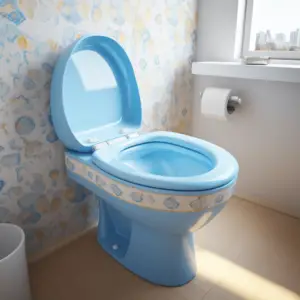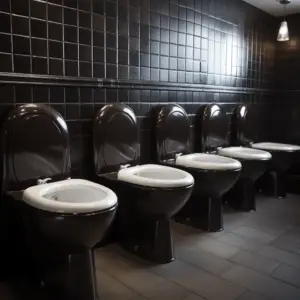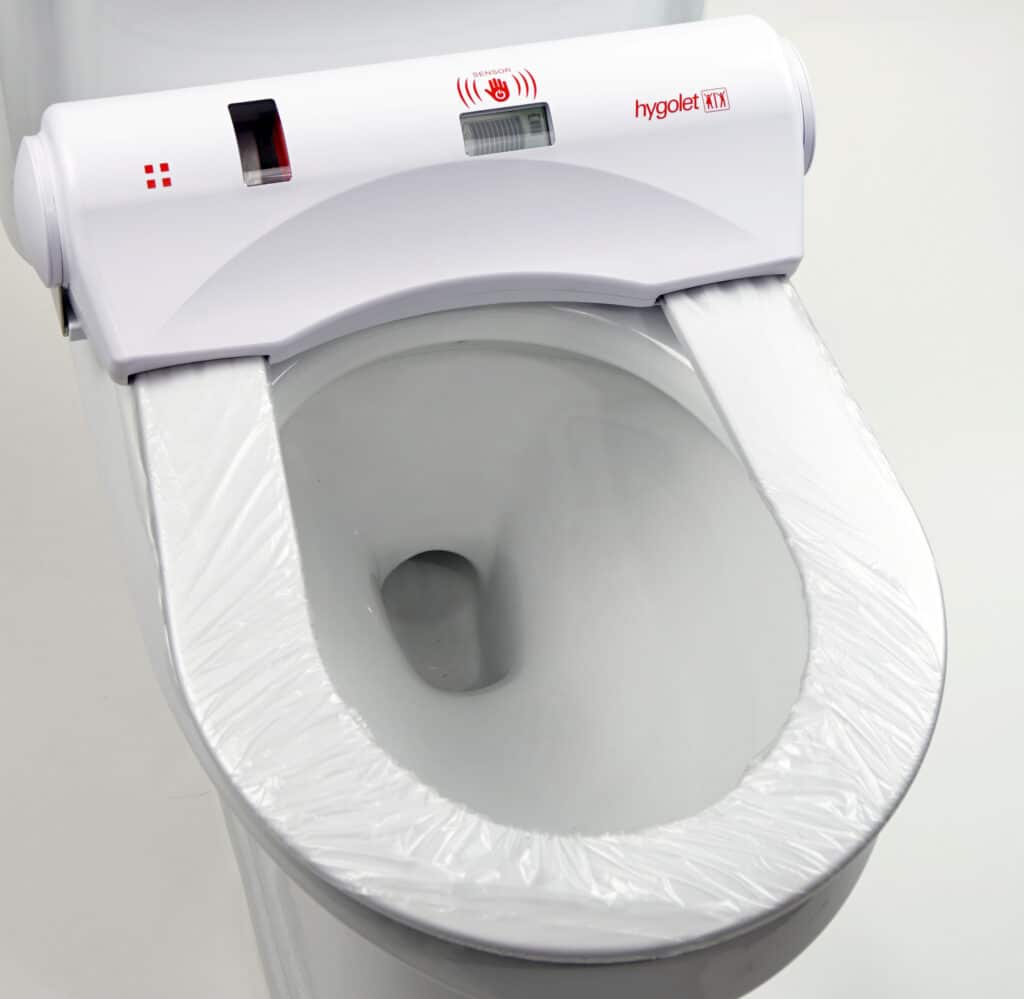Toilet Seat Covers a moment of pause. You don’t really want to remember why you ventured into the bathroom in the first place, but there it is, staring back at you from the toilet seat- the cover. And all time it won’t stop nagging you until you get up to investigate: is this thing flushable?
Except for one, most toilet seat coverings are created from clog-causing materials. Public restroom paper toilet seat coverings break apart when flushed for increased flushing power.
Some decorative toilet seats, like cotton or faux fur, aren’t simply disposed of in the toilet. The label may not indicate they’re not flushable.
Most toilet seat covers can be flushed, but if the toilet has weak plumbing or a rural septic system, it may not be a smart idea. For those who wonder, “is that to be flushed?” this article has more information.
Table of Contents
Are Toilet Seat Covers Flushable?

Of course, we can’t just give a simple yes or no to answer this question. As we’ve mentioned before, there are paper toilet seat covers that can be flushed, but there’re others that you might end up calling a plumber if you flushed them down the toilet.
Paper toilet seat covers are essential to safeguard you against any bacteria left on the toilet from the people before you. They are often provided in public restrooms, but some tend to bring their own just in case there aren’t any available.
While it’s possible to break down paper toilet seat covers at commercial water treatment, some cannot break down everywhere. Perhaps that’s why many people who have a house with a septic tank prefer throwing them in the garbage, i.e. if they’re going to use them.
There are various reasons behind this idea, but usually, the point is to prevent clogging the septic system. Just like it’s recommended to use septic-safe toilet paper that dissolves well in water, the same way you’re recommended to use only toilet seat covers that will break down in the septic system.
Toilet Seat Covers
Septic tanks simply spread the waste throughout septic fields. That means they don’t have industrial facilities like a city or town to help break things down- even those labeled as flushable.
In addition to septic systems, buildings, sewer piping, and building drains may be poorly designed and clog rapidly if something large is flushed. This is especially true for gravity-flush toilets and septic tanks.
However, paper toilet seat covers are used for safety in public restrooms, while non-flushable ones are utilized for comfort or decoration.
How to Properly Use Toilet Seat Covers
Knowing how to use toilet paper properly will help you avoid calling a plumber. Due to their rarity, you may see one while traveling and wonder, “is that to be flushed?”
Most public restrooms tend to have a dispenser above the toilet that provides you with toilet seat covers. So after pulling the cover out of the dispenser, you will have to unfold it and look for the flap in the middle. This flap will sit in the water while you use the toilet.
Check that the flap is on the front side of the toilet, i.e. the side in front of you when you are sitting. The flap should simply hang from the cover, touching down to the water below.
This way, once you’ve finished your business, all you need to do is flush and the toilet seat will go with it because of the flap. This is great in the fact that you won’t have to touch the toilet seat after you have used it!
Quick tips for using a toilet seat cover:
Check that there are no visible holes in the toilet seat. Holes in the toilet seat cover simply defeat its sole purpose. Make sure that the toilet cover is covering the whole toilet seat so that your skin doesn’t touch the toilet seat.
Make sure there aren’t big droplets on the toilet seat. Well, you have a toilet seat cover separating you from the toilet seat. But it’s a very thin paper and will not protect you from liquids that much. It will just get damp and fall apart.
Effects of Toilet Seat Covers on the Environment
Although the majority believes that toilet seat covers are completely safe for humans and the environment, there’s actually evidence that demonstrates they are bad for the environment. The plastic in the toilet seat covers can contaminate the water and the soil surrounding it. Eventually, this plastic, together with its chemicals will seep into the ground, causing harm to Earth. If you’re planning on using flushable toilet seat covers, make sure they are not plastic.
Some studies also have it that toilet seat covers aren’t that useful when protecting you from bacteria on a toilet seat. There are hardly any cases where dangerous bacteria are on the surface of the toilet seat. Besides, in such cases, your skin acts as a barrier that fights off bacteria unless there’s an open wound where the bacteria can reach.
Speaking of bacteria, it is important to state that there are many other things you may come into contact with in the course of the day, more bacteria than the toilet. Not to mention that toilets’ slick surfaces prevent microorganisms from sticking.
Additionally, toilet seats do not stay warm enough to sustain transmittable bacteria, and as such, many worries relating to public toilet seats aren’t always necessary. If you truly want to take precautions when in contact with toilet seats, then you better yet take precautions with just about anything else that is prone to have bacteria; think of things like TVs, refrigerators, and even money.
Why Do Toilet Seat Covers Have a Middle?
Most people don’t know how to use the toilet seat covers. However, to get the maximum protection, you need to get it right. In brief, the cover has a middle to enable water and is pulled down when you flush your toilet. The flap should hang down from the front side of the toilet.
Should You Use Toilet Seat Cover?

Many controversies surrounding toilet seat cover leave you wondering whether it is okay to use them. Well, there is no harm in trying because they’re even eco-friendly.
Toilet seat cover are not something to worry about but yes, in terms of preventing bacteria left on toilet seats by other toilet users. In addition, they don’t stay warm, reducing the bacterial transmission, unlike the warm one, which keeps the bacteria.
So, it is significant to keep these factors in mind as a user:
- Ensure there are no visible
- The toilet seat cover should cover the whole toilet seat to protect your skin from touching the toilet.
- Make sure there are no big droplets on the toilet seat.
Are Paper Toilet Seat Cover Flushable?
The solution is complicated because some paper toilets are flushable. Paper toilet seat covers can degrade at a commercial treatment plant, but not everywhere.
Paper toilet seat cover to prevent contamination from previous users. Public restrooms may offer them, but some may bring their own. A commercial treatment plant can disintegrate paper toilet seat covers. If your residence uses septic, throw it out to avoid clogs.


